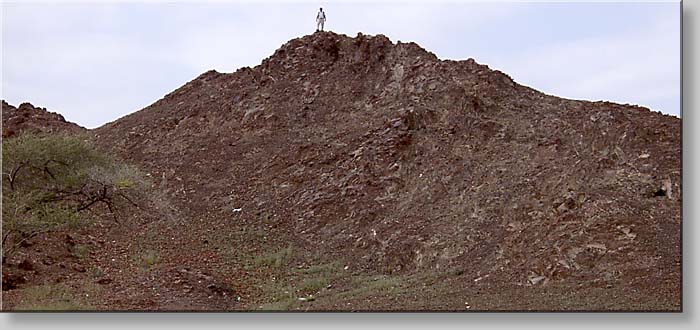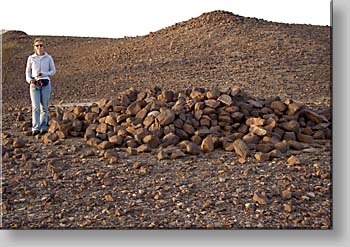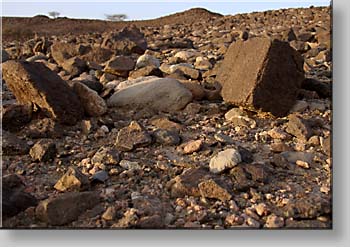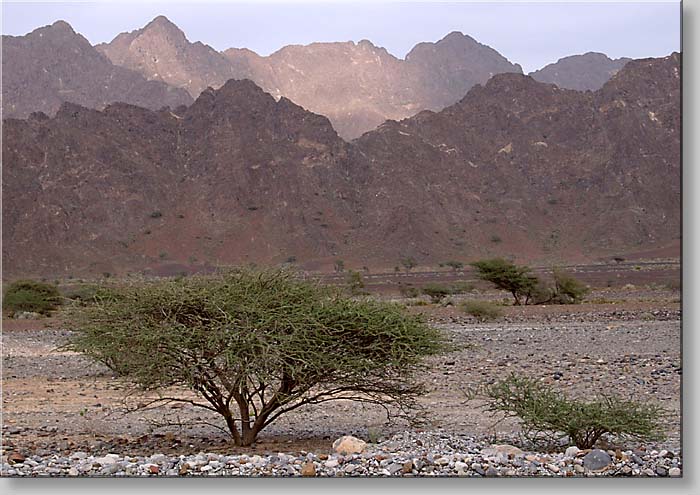Walking on the moon
Ophiolites
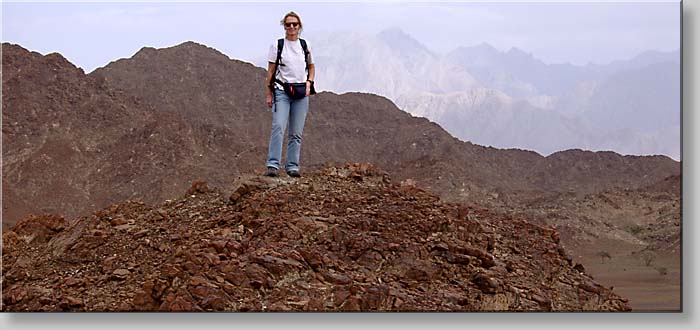
Is it possible to walk on the moon, which is approximately 350 000 km above us?
Neil Armstrong and Buzz Aldrin showed the world how to do that in the summer of 1969.
Is it possible to walk on the earth's mantle which is about 40-80 km below the earth's crust, which no man-made high-tech drill can reach?
Silvia and I showed how to do that in the winter of 2005!
Oman features a very unique geological speciality, mountains originating directly from the interface between earth's crust and earth's mantle - or in more scientific terms from the Mohorovicic-Discontinuity. About 200 million years ago in the Tethys Ocean a huge undersea ridge was built up - similar to the Mid-Atlantic Ridge today. While the continental plates drifted along for million of years, the huge Thetys Ocean was almost closed. The Gulf of Oman is a remnant of it. The ridge, which was once submerged has been pushed up and landwards to the former Godwanaland where Oman is nowadays located. These mountains, originating from oceanic crust, are easily recognized by their dark brown to green colors and their shape, like a lunar landscape. The higher mountains like Jebel Akdhar are not of this origin - they consist of folded limestone.
The ophiolitic mountains can be more than 1000 m high or only a few metres high. Even the small ones have the same rugged shape as the big ones, a kind of fractal appearance. It was funny for us to choose a 25 metre high micro mountain, plan an ascent route along a mini-ridge and reach the summit within 5 minutes.
